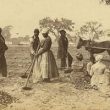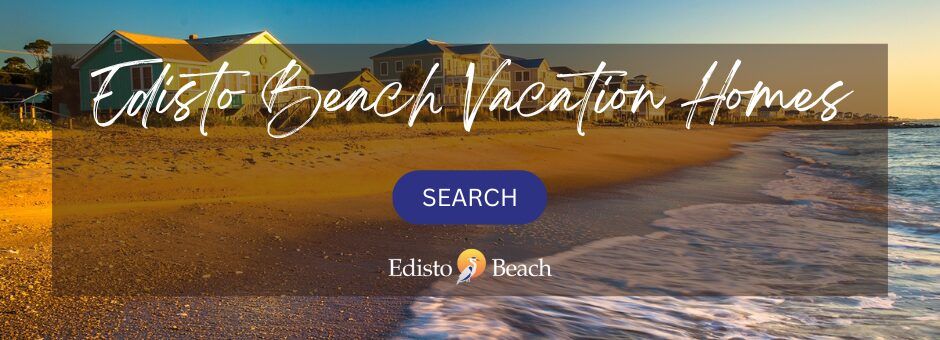The Ernest F. Hollings ACE Basin is one of South Carolina’s natural wonders. It’s 350,000 acres and named after the three rivers drain into St. Helena Sound and eventually spills into the Atlantic Ocean. The three rivers include Ashepoo, Combahee, and Edisto (ACE).
An aerial view shows the unique design of vivid greenery and blue waterways swirling through the land. When visiting the ACE Basin on the ground provides a breathtaking experience.
The Basin is a National Wildlife Refuge located along the southern coast of South Carolina between Charleston and Beaufort and extends over to Yemassee. The ACE Basin includes Edisto Island, Hunting Island State Park, and St. Helena Sound.
Many people who haven’t visited the ACE Basin but have heard about it think it’s just all water and marsh grass, and that can’t be further from the truth. It contains some of the best spots the Lowcountry has to offer, like Edisto Beach State Park, Hunting Island State Park, and the Old Sheldon Church.
Let’s explore the ACE Basin a bit further now.
The Grove Plantation House
George Washington Morris built this antebellum-style plantation house in 1828. It sits on 1,112 acres of land and was primarily a rice crop. This plantation had numerous owners throughout the years and was finally acquired by U.S. Fish & Wildlife Service in 1992.
This mansion-style house is one of the few left that dates back to the Civil War. The Ernest F. Hollings Wildlife Refuge headquarters currently run in the house and is responsible for protecting parts of the Basin and several other preserves.
Edisto Beach State Park
This park is rich in Native American history and still has evidence left behind an ancient shell midden created by the Edisto Indians that date back to 2,000 B.C. Other exciting things to see at Edisto Beach State Park are the Botany Bay Ecotour, fishing in the salt marsh, boating, swimming, geocaching, bird watching, hiking, and biking.
One of the best sights to see at Edisto Beach State Park is Botany Bay Plantation Heritage Preserve, a beautiful beach with a shoreline filled with dead trees called the boneyard. This unique sight is great for taking pictures and exploring.
The story of Botany Bay dates back to 1695 when Christopher Hinkley received a land grant for 170 acres. This land was sold, swapped, named, renamed, broken apart, and merged back together throughout history. At one time, it was home to plantation owners and West African slaves called Gullah.
The Gullah people worked the rice crops and plantations while living in slave quarters on the property. They were specially chosen because of their superior knowledge and skills for growing rice.
While they lived on the plantation, they ate what was available to them and created one-pot meals that are now popular Southern foods known today, such as shrimp and grits, Gullah rice, fried corn cakes, low country peaches, and cream pie, and sautéed shrimp and okra to name a few.
Edisto Island specifically has touches of Gullah history, vibrant artwork, and baskets. Their famous sweetgrass baskets can be found throughout the area, and when you find one, you can be sure it was made with the ancient weaving technique used by the Gullah throughout history.
The craft of weaving baskets is only passed down through family generations which continues today. So keep your eye out for these beautiful handcrafted baskets when visiting Edisto and the ACE Basin.
Hunting Island State Park
This beautiful state park features 5 miles of beach, a saltwater lagoon, a marsh and maritime forest, a historical lighthouse, pier fishing, a nature center, and picnic shelters. It also features 100 campsites that feature electric and water hookups. Other things to do at Hunting Island State Park are hiking, bird watching, paddling, boating, and biking.
Old Sheldon Church
This church has been in ruin for over 120 years. It’s a sight to see if you are interested in history. It was one of the first Greek-Revival structures built in America and was originally erected between 1745 to 1755. During the revolution, gun powder was stored inside by the Patriots.
This church was burned down in 1779, rebuilt, and burned down again in 1865. The ruins are still a unique sight to see for history buffs who are interested in pre-revolutionary churches.
The ACE Basin covers 350,000 acres and is filled with history and places to visit. Most of the land was once covered with rice plantations but now is home to essential waterfowl habitats and features undeveloped wetlands, ecosystems, managed wetlands, peatlands, barrier islands, and natural plant communities.
One of the most popular attractions is the yearly nesting of about 50 to 100 sea turtles. The turtle nests are protected with screens to prevent raccoons from accessing the turtles. The ACE Basin is also home to migratory birds, waterfowl, and endangered species.
Locals and visitors enjoy exploring the ACE Basin and often visit each section on different days. This large area is family-friendly and an excellent way to teach young children about nature and history while having fun.
If you love nature, bring your camera along to capture stunning pictures of the land, water, marsh grass, sunset, light tower, plantation home, wildlife, waterways that twist through the land, and more.
Since the ACE Basin is a protected area, you cannot take seashells or anything else from the site. It’s best to take pictures and keep the memory instead.
Family Fun
There are campgrounds and picnic shelters located throughout the basin for families to escape from the city and enjoy nature. Some campgrounds have a pathway to the beach, but you need to check with the office to ensure you choose the right spot.
Specific areas of the ACE Basin, such as the beach at Botany Bay, are an excellent spot for engagement, wedding, and family photos. The ocean and the sunset are a natural background that makes every picture meaningful.
Whether you are a local or a tourist, make sure you check out the ACE Basin to explore all it has to offer!






